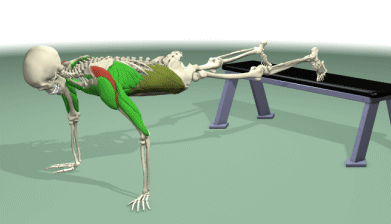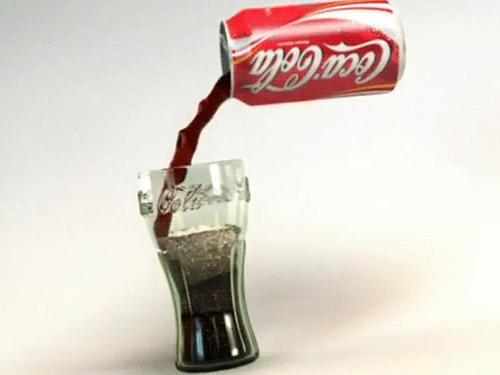




THE FITNESS
DIGEST.
Fluorosis Overview
Fluorosis is a cosmetic condition that affects the teeth. It’s caused by overexposure to fluoride during the first eight years of life. This is the time when most permanent teeth are being formed.
After the teeth come in, the teeth of those affected by fluorosis may appear mildly discolored. For instance, there may be lacy white markings that only dentists can detect. In more severe cases, however, the teeth may have:
-
Stains ranging from yellow to dark brown
-
Surface irregularities
-
Pits that are highly noticeable
Although fluorosis is not a disease, its effects can be psychologically distressing and difficult to treat. Parental vigilance can play an important role in preventing fluorosis.
Fluorosis Causes
A major cause of fluorosis the inappropriate use of fluoride-containing dental products such as toothpaste and mouth rinses. Sometimes, children enjoy the taste of fluoridated toothpaste so much that they swallow it instead of spitting it out.
But other things can cause fluorosis. For example, taking a higher-than-prescribed amount of a fluoride supplement during early childhood can cause it.
Fluoride Levels in Drinking Water
Fluoride occurs naturally in water. Natural fluoride levels above the currently recommended range for drinking water may increase the risk for severe fluorosis- exceeding 2 parts per million.
Fluorosis Symptoms
Symptoms of fluorosis range from tiny white specks or streaks that may be unnoticeable to dark brown stains and rough, pitted enamel that is difficult to clean. Teeth that are unaffected by fluorosis are smooth and glossy. They should also be a pale creamy white.Contact your dentist if you notice that your child’s teeth have white streaks or spots or if you observe one or more discolored teeth.
Dentists rate the severity of fluorosis using the following categories:
-
Questionable. The enamel shows slight changes ranging from a few white flecks to occasional white spots.
-
Very mild. Small opaque paper-white areas are scattered over less than 25% of the tooth surface.
-
Mild. White opaque areas on the surface are more extensive but still affect less than 50% of the surface./Some brown staining.
-
Moderate. White opaque areas affect more than 50% of the enamel surface./Moderate brown staining
-
Severe. All enamel surfaces are affected. The teeth also have pitting that may be discrete or may run together/Severe brown staining.
Fluorosis Treatments
In many cases, fluorosis is so mild that no treatment is needed. Or it may only affect the back teeth where it can’t be seen.
The appearance of teeth affected by moderate-to-severe fluorosis can be significantly improved by a variety of techniques. Most of them are aimed at masking the stains.
Such techniques may include:-
-
Tooth whitening and other procedures to remove surface stains
-
Bonding, which coats the tooth with a hard resin that bonds to the enamel
-
Crowns
-
Veneers, which are custom-made shells that cover the front of the teeth to improve their appearance
Fluorosis Prevention
Parental vigilance is the key to preventing fluorosis.
If your water comes from a public system, your doctor or dentist -- as well as your local water authority or public health department --should tell you how much fluoride is in it. If you rely on well water or bottled water, your public health department or a local laboratory should analyze its fluoride content. Once you know how much fluoride your child is getting from drinking water and other sources such as fruit juices and soft drinks, you can work with your dentist to decide whether or not your child should have a fluoride supplement.
At home, keep all fluoride-containing products such as toothpaste, mouth rinses, and supplements out of the reach of young children. If a child ingests a large amount of fluoride in a short period of time, it may cause symptoms such as:
-
Nausea
-
Diarrhoea
-
Vomiting
-
Abdominal pain
Although fluoride toxicity usually doesn’t have serious consequences, it sends several hundred children to emergency rooms each year.(In the U.S.A)
It’s also important to monitor your child’s use of fluoridated toothpaste. Only place a pea-sized amount of toothpaste on your child’s toothbrush. That is sufficient for fluoride protection. Also teach your child to spit out the toothpaste after brushing instead of swallowing it. To encourage spitting, avoid toothpastes containing flavours that children may be likely to swallow.



Physical fitness Disclaimer and Waiver of liability:
Exercises are not without their risks and the exercise programs in this website may result in injuries.Any person who undertakes these exercises does so at their own risk.To reduce the risk of injuries ,you should consult your doctor before beginning these or any other exercise programs.As with any exercise program ,if at any point during your workout you believe conditions to be unsafe or begin to feel faint or dizzy,have physical discomfort or pain, you should stop immediately and consult a physician.
Daily exercise for Working women.
Jumping Jacks. . Effective workouts.
Group exercise and its benefits.
Calf raises-free style . Push ups.
Tummy exercises. Hoola Hooping .
Fitness Motivational tips. Barbell Squauts.
The myths of spot reduction. Leg press.
Standing calf raises. Concentration curls.
Bench (Tricep) dips.. One arm dumbbell rows.
Pec deck Flye. Fr0nt dumbbell raises. Glute ham raise.
Seated leg curl . Close grip bench press .
.

Please keep comments positive and constructive.
Help the WEBSITE by reporting inappropriate comments to thefitnessdigest@gmail.com . Inappropriate comments may be reported and/or removed.